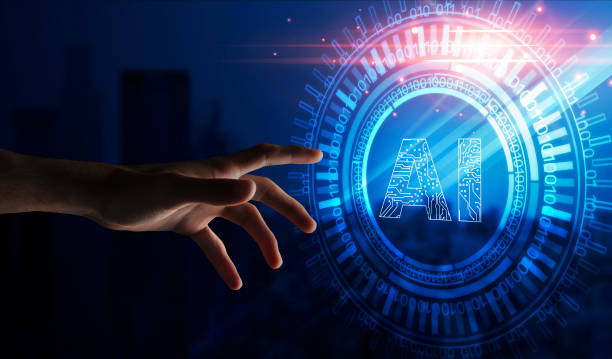What is an AI Robot? A Comprehensive Definition and Its Types
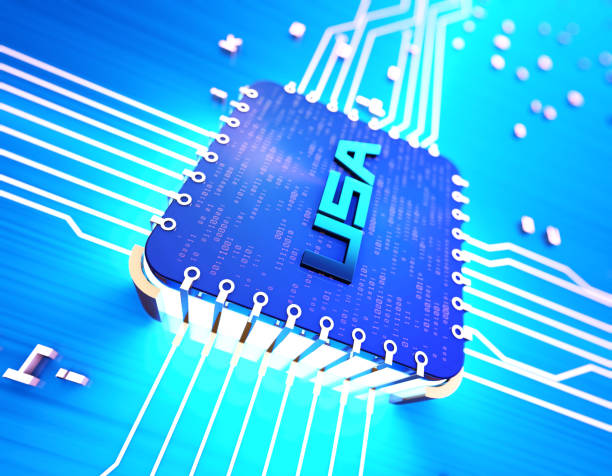
#AI_Robot (Artificial Intelligence Robot) is generally an artificial intelligent agent embodied in the form of a physical or software robot.
These robots use #Artificial_Intelligence algorithms to perform various tasks that typically require human intelligence.
There are various types of AI robots, each designed for specific applications.
Industrial robots, service robots, medical robots, and military robots are just a few examples of these categories.
For example, in industry, #AI_Robots are used for repetitive, dangerous, or high-precision tasks.
In the service sector, these robots can be used as virtual assistants, guides, or even companions at home.
In medicine, surgical robots perform complex operations with high precision, and nurse robots assist in patient care.
In the military field, AI robots are used for reconnaissance, neutralization, and dangerous operations.
An AI robot is capable of collecting information from its environment through sensors, processing this information using AI algorithms, and ultimately making and executing appropriate decisions.
These decisions can include movement, object manipulation, human interaction, or even learning and adapting to new conditions.
Thus, AI robots can perform complex tasks automatically and without direct human intervention, helping to improve efficiency and productivity in various fields.
Is your current e-commerce website design causing you to lose customers and sales?
Rasawweb is your solution with its modern and user-friendly e-commerce website designs!
✅ Significant increase in conversion rates and sales
✅ Building strong branding and attracting customer trust
⚡ Get a free e-commerce website design consultation from Rasawweb!
Architecture and Main Components of an AI Robot
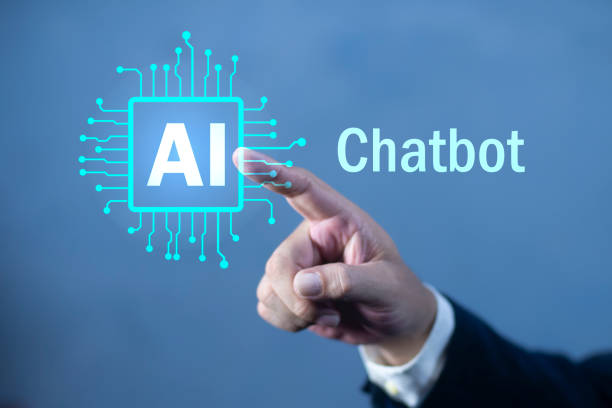
An AI robot consists of several main components that, in cooperation with each other, enable the performance of various tasks.
These components include:
- Sensors: Sensors help the robot collect information from the surrounding environment.
This information can include images, sounds, temperature, pressure, and other sensory data. - Processor: The processor, which is usually a computer, processes the information collected by the sensors.
This processing includes data analysis, pattern recognition, and extraction of useful information. - Artificial Intelligence Algorithms: AI algorithms are the core of an intelligent robot.
These algorithms enable the robot to learn, make decisions, and solve problems.
Some common AI algorithms include machine learning, neural networks, and fuzzy logic. - Actuators: Actuators enable the robot to interact with its environment.
These actuators can include motors, arms, wheels, and other mechanical components. - Power Source: The power source provides the necessary energy for the robot’s operation.
This source can include batteries, solar cells, or a connection to mains electricity.
Overall, the architecture of an AI robot is designed such that information is collected through sensors, processed by the processor, and then appropriate decisions are made using AI algorithms and executed via actuators.
This process allows the robot to perform complex tasks automatically and without direct human intervention.
Machine Learning and its Role in the Development of AI Robots
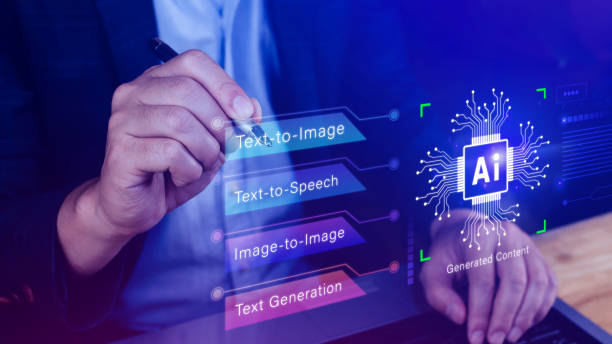
Machine Learning plays a very important role in the development of AI robots.
Machine learning enables robots to learn from data and improve their performance without explicit programming.
This is particularly important in cases where tasks are complex and unpredictable.
There are various types of machine learning algorithms, each suitable for specific applications.
For example, Supervised Learning enables robots to learn patterns and make accurate predictions using labeled data.
Unsupervised Learning enables robots to discover hidden patterns in unlabeled data.
Reinforcement Learning enables robots to learn optimal strategies for various tasks through trial and error.
By using these algorithms, AI robots can continuously improve their performance and adapt to new conditions.
For example, an industrial robot designed for welding parts can use machine learning to learn optimal welding patterns and improve welding quality.
A service robot operating at home can use machine learning to learn people’s habits and preferences and provide personalized services.
A medical robot designed for diagnosing diseases can use machine learning to increase diagnostic accuracy and assist doctors in decision-making.
| Machine Learning Algorithm | Application in AI Robots |
|---|---|
| Supervised Learning | Object detection, data classification |
| Unsupervised Learning | Data clustering, dimensionality reduction |
| Reinforcement Learning | Robot control, path planning |
Therefore, machine learning is a powerful tool that enables AI robots to adapt to new conditions and continuously improve their performance.
Applications of AI Robots in Various Industries
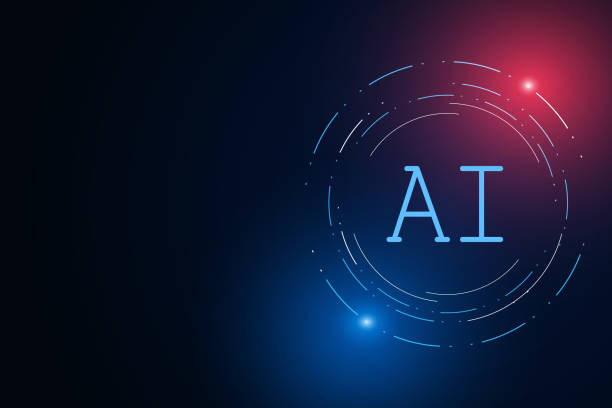
AI robots have widespread applications in various industries and help improve efficiency, productivity, and safety.
In the manufacturing industry, AI robots are used for repetitive, dangerous, or high-precision tasks.
These robots can assemble parts, perform welding, paint, and package products.
In the healthcare industry, AI robots are used for surgery, patient care, and disease diagnosis.
Surgical robots can perform complex operations with high precision, and nurse robots can assist in patient care at home or in hospitals.
In the transportation industry, AI robots are used for autonomous driving, goods delivery, and traffic management.
Autonomous vehicles can transport passengers without a human driver, and delivery robots can quickly and automatically deliver packages to customers.
In the agriculture industry, AI robots are used for planting, cultivation, and harvesting crops.
These robots can plant seeds, eliminate weeds, and harvest crops.
In the service industry, AI robots are used for customer service, guidance, and answering questions.
Virtual assistants can help customers with online shopping, hotel reservations, and technical problem-solving.
Overall, AI robots are transforming various industries and helping to improve human lives.
Are you tired of losing business opportunities due to not having a professional corporate website?
Rasawweb helps you by designing professional corporate websites:
✅ Build a powerful and trustworthy image for your brand
✅ Convert website visitors into loyal customers
⚡ Get a free consultation right now!
Challenges and Limitations of AI Robots
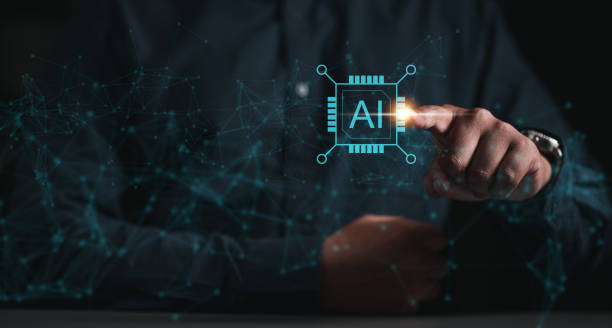
Despite numerous advantages, AI robots also face challenges and limitations.
One of the most significant challenges is the high cost of developing and deploying AI robots.
These robots require advanced equipment, complex software, and high technical expertise, which can incur significant costs.
Another challenge is the need for large amounts of high-quality data to train AI robots.
These robots require a large volume of data to learn and improve their performance, and collecting and processing this data can be time-consuming and expensive.
Furthermore, AI robots may encounter errors that could lead to financial and human losses.
For example, a surgical robot might make a mistake during an operation and harm the patient.
Also, AI robots might be attacked by hackers, and their control could fall into the hands of malicious individuals.
Another challenge is the ethical issues related to the use of AI robots.
For instance, the use of AI robots in warfare could lead to innocent civilian casualties, and their use in diagnosing diseases could lead to discrimination against individuals.
On the other hand, #AI_Robots have not yet reached the level of human intelligence and cannot fully perform complex tasks.
They require human supervision and intervention and cannot operate completely autonomously.
However, with technological advancements, it is expected that these challenges and limitations will be overcome, and AI robots will play a more significant role in human lives.
The Future of AI Robots and Their Impact on Human Life

The future of AI robots appears very bright and promising.
With technological advancements, AI robots are expected to become smarter, more efficient, and more reliable.
They will be capable of performing more complex tasks and operating autonomously.
AI robots will play a more significant role in human lives in the future and will help improve the quality of life.
In the workplace, AI robots can perform repetitive and dangerous tasks, allowing humans to focus on more creative and meaningful work.
In healthcare, AI robots can assist in early disease detection, provide personalized treatments, and help care for the elderly and disabled.
In education, AI robots can assist in providing personalized learning, help students learn better, and assist teachers in evaluating student performance.
In transportation, AI robots can help reduce traffic accidents, manage traffic, and assist in automated goods delivery.
However, ethical and social issues related to the use of AI robots must also be considered.
It must be ensured that AI robots are used fairly and responsibly and respect human rights and freedoms.
AI robots have the potential to significantly improve human lives, but they must be used intelligently and responsibly.
AI Robots in Iran: Opportunities and Challenges

The development and use of #AI_Robots in Iran can create many opportunities for the country.
Iran has a specialized and talented workforce in the fields of information technology and artificial intelligence, which can play an important role in the development of AI robots.
Furthermore, Iran possesses rich natural resources and diverse industries that can utilize AI robots to improve efficiency and productivity.
For example, AI robots can be used in the oil and gas industry for oil and gas extraction and refining, in the agriculture industry for planting and harvesting crops, and in the automotive industry for producing higher-quality vehicles.
However, the development and use of AI robots in Iran also face challenges.
One of the most significant challenges is the lack of investment in AI research and development.
Iran needs more investment in AI research and development to compete with developed countries in this field.
Another challenge is the lack of necessary infrastructure for the development and use of AI robots.
Iran needs to develop its information and communication technology infrastructure to effectively use AI robots.
| Opportunities | Challenges |
|---|---|
| Skilled workforce | Lack of investment |
| Rich natural resources | Lack of infrastructure |
| Diverse industries | Ethical and social issues |
Additionally, ethical and social issues related to the use of AI robots must also be considered.
It must be ensured that AI robots are used fairly and responsibly and respect human rights and freedoms.
Ethical Considerations in the Design and Use of AI Robots

When designing and using AI robots, ethical considerations must be taken into account.
One of the most important ethical considerations is the issue of accountability.
If an AI robot makes a mistake and causes damage, who will be responsible? The robot’s designer, manufacturer, or user? This issue requires careful examination and the establishment of clear laws and regulations.
Another ethical consideration is the issue of privacy.
AI robots can collect a lot of information about individuals, including personal information, behavioral data, and financial information.
It must be ensured that this information is stored securely and responsibly and is not misused.
Another ethical consideration is the issue of discrimination.
AI robots might inadvertently act discriminatorily and favor certain individuals or groups.
For example, an AI robot designed for recruitment might inadvertently prefer men over women.
It must be ensured that AI algorithms are designed fairly and without discrimination.
Another ethical consideration is the issue of security.
AI robots might be attacked by hackers, and their control could fall into the hands of malicious individuals.
It must be ensured that AI robots are designed securely and are resilient against cyber attacks.
Overall, the design and use of AI robots require careful attention to ethical issues.
It must be ensured that AI robots are used fairly, responsibly, and securely, and respect human rights and freedoms.
AI robots should benefit society and help improve human lives.
Tired of losing business opportunities due to not having a professional corporate website? Worry no more! With Rasawweb’s corporate website design services:
✅ Your brand’s credibility and professionalism will increase.
✅ You will attract more customers and sales leads.
⚡ Get a free consultation right now to get started!
Training and Development of Necessary Skills for Working with AI Robots

To work with AI robots, we need to acquire and develop specific skills.
One of the most important skills is programming knowledge.
To program and control AI robots, we need knowledge of programming languages such as Python, C++, and Java.
Another skill is AI knowledge.
To understand how AI robots work, we need knowledge of AI algorithms, machine learning, and neural networks.
Another skill is robotics knowledge.
To work with physical robots, we need knowledge of mechanics, electronics, and control systems.
Additionally, we need soft skills such as problem-solving, critical thinking, and teamwork.
AI robots often operate in complex and unpredictable environments, requiring the ability to solve problems and make quick decisions.
Also, we need the ability to work in teams, as the development and use of AI robots often require collaboration among various specialists.
To acquire and develop these skills, we can utilize online courses, university programs, and workshops.
Furthermore, we can gain practical experience by participating in hands-on projects and working with AI robots.
The development and use of AI robots require a combination of theoretical knowledge and practical experience.
By training and developing the necessary skills, we can work effectively with AI robots and use them to solve problems and improve human lives.
AI robots should be used as a tool to enhance human capabilities and improve the quality of life.
Legislation and Standardization Process in the Field of AI Robots

With the widespread use of AI robots, the need for legislation and standardization in this field is felt more than ever.
Legislation and standardization can help ensure the safety, accountability, and ethical use of AI robots.
Currently, many countries are examining and drafting laws and standards for AI robots.
These laws and standards include issues such as accountability for damages caused by robot operations, protection of individuals’ privacy, and prevention of discrimination by robots.
Additionally, standards for robot safety and performance are also being developed.
These standards include aspects such as safety requirements for industrial robots, performance standards for surgical robots, and security standards for autonomous robots.
The goal of legislation and standardization is to create a framework that supports the responsible development and use of AI robots.
This framework should, on one hand, encourage innovation and progress in this field, and on the other hand, protect human rights and freedoms.
Given the rapid pace of AI technology advancement, legislation and standardization in this field require a dynamic and flexible approach.
Laws and standards must be continuously reviewed and updated to keep pace with technological developments.
AI robots must be supervised and controlled to prevent misuse and ensure they benefit society.
Legislation and standardization in the field of AI robots is a complex and multifaceted process that requires collaboration between governments, industry, and civil society.
Frequently Asked Questions
| Question | Answer |
|---|---|
| What is an AI robot? | It is a robot that uses artificial intelligence capabilities to understand its environment, reason, learn, and make decisions to perform complex tasks independently. |
| What is the main difference between a regular robot and an AI robot? | AI robots can learn and adapt to their environment, whereas regular robots typically operate based on fixed, predetermined programming. |
| In what fields are AI robots used? | In fields such as industry (production lines), medicine (robotic surgeries), services (customer support, smart vacuum cleaners), exploration (space and underwater), and entertainment. |
| How do AI robots learn? | They acquire new skills through Machine Learning and Deep Learning algorithms, by analyzing large data sets and identifying patterns. |
| Can AI robots have emotions? | Currently, no. They can identify or simulate emotions, but they do not experience genuine emotions like humans do. |
| What are the most important advantages of using AI robots? | Increased productivity, reduced human error, performance of dangerous or repetitive tasks, and provision of innovative and efficient services. |
| What challenges exist in the development of AI robots? | Need for abundant and high-quality data, algorithmic complexity, ethical issues, cybersecurity, and high research and development costs. |
| Are AI robots dangerous to humans? | With adherence to safe design principles and ethical regulations, no. Concerns are mostly related to social and economic impacts, such as changes in the job market. |
| What is an example of an AI robot in daily life? | Smart vacuum cleaner robots (like Roomba) that autonomously map and clean homes, or smart voice assistants (like Siri and Alexa). |
| How is the future of AI robots predicted? | They are expected to become smarter, more autonomous, and capable of more complex interactions with humans, playing a more prominent role in industry, medicine, transportation, and daily life. |
And other services of RasaWeb Advertising Agency in the field of advertising
- Smart Digital Advertising: A blend of creativity and technology to increase click-through rates through Google Ads management.
- Smart UI/UX: A creative platform for improving customer behavior analysis with engaging user interface design.
- Smart Advertising Campaign: An effective tool for online growth with the help of intelligent data analysis.
- Smart Marketplace: A fast and efficient solution for increasing sales with a focus on Google Ads management.
- Smart UI/UX: Designed for businesses seeking to increase click-through rates through marketing automation.
And hundreds of other services in the field of internet advertising, advertising consultation, and organizational solutions
Internet Advertising | Advertising Strategy | Advertorial
Sources
Types of AI Robots, Latest Advancements in Smart Robotics, Discussion on the Future of AI in Robotics, Applications of AI Robots
❓ Are you ready to transform your business in the digital world? Rasawweb Afarin, with expertise in comprehensive digital marketing services including corporate website design, paves your path to growth.
📍 Tehran, Mirdamad Street, next to Bank Markazi, Kazeroun Jonoubi Alley, Ramin Alley, No. 6

